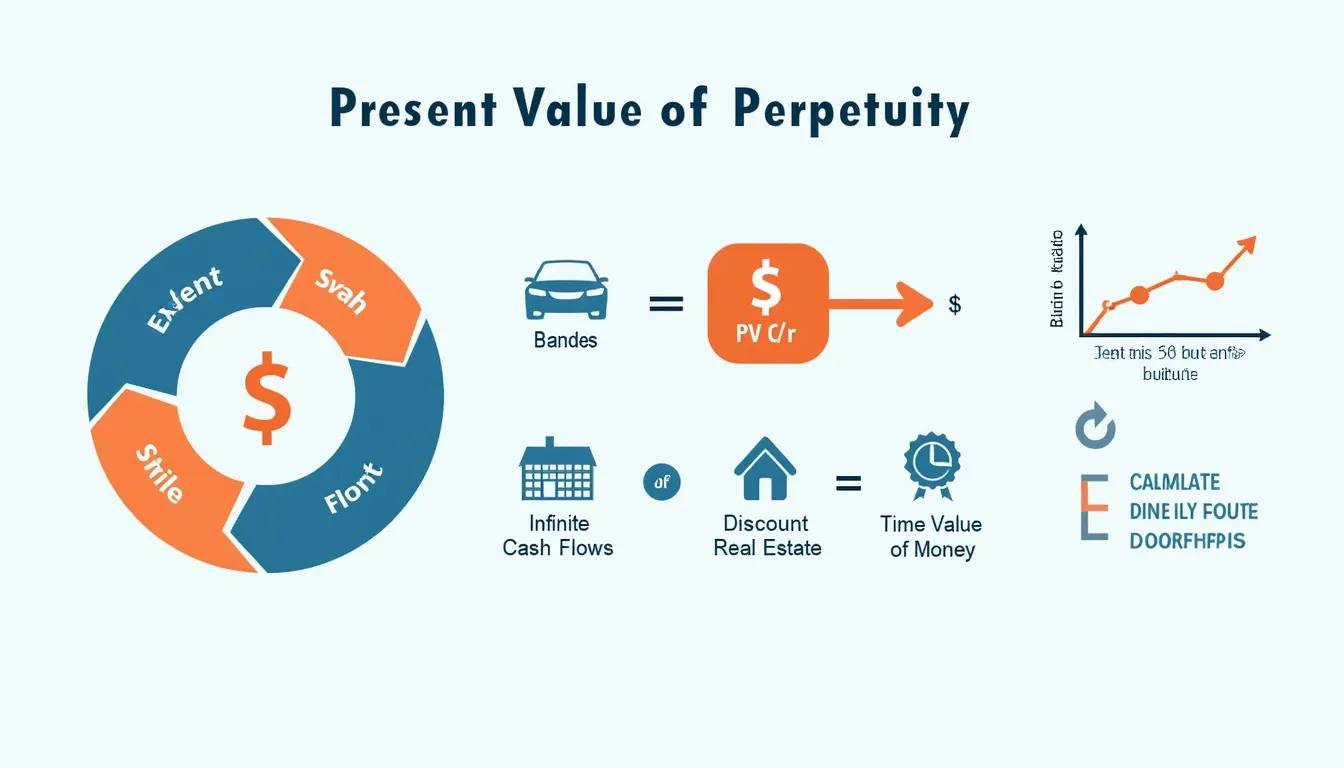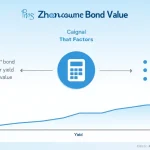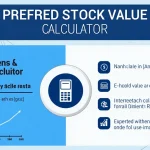Present Value of Perpetuity Calculator
Is this tool helpful?
How to use the tool
- Dividend/Coupon per period (USD). Type the fixed payment you expect forever.
Example inputs: 200 or 4,750. - Discount rate (%). Enter your required annual return as a percentage.
Example inputs: 4.0 or 9.3. - Press Calculate; the result shows the present value rounded to two decimals.
Formula used
For a level perpetuity the calculator applies
$$PV = rac{C}{r}$$
- C = cash flow per period (USD).
- r = discount rate as a decimal.
Example calculations
- Example 1 – Perpetual bond
C = $200, r = 4 % ⇒ $$PV = rac{200}{0.04}=5{,}000$$. - Example 2 – Preferred stock
C = $50, r = 7.5 % ⇒ $$PV = rac{50}{0.075}=666.67$$.
Quick-Facts
- Typical equity discount rates range 3 %-12 % (Damodaran, 2023).
- UK consols, first issued 1751, still priced with the perpetuity formula (UK Debt Management Office, 2022).
- Preferred dividends commonly run $0.25-$2.00 quarterly (Investopedia, Preferred Stock Basics).
- IFRS uses perpetuity methods for terminal value in discounted cash-flow tests (IAS 36, 2021).
FAQs
What does the calculator output?
The tool returns the present value—the lump sum you would accept today instead of endless identical payments.
Which inputs are mandatory?
You need only two numbers: the constant cash flow and a positive discount rate; both can include decimals.
How does the calculation work?
It divides the cash flow by the discount rate expressed as a decimal, following $$PV = rac{C}{r}$$ (Brealey et al., 2022).
What if cash flows grow each year?
Use the growing-perpetuity formula $$PV = rac{C}{r-g}$$ where g is the growth rate below r (Ross, 2022).
Why is the discount rate critical?
Each 1 % increase in r reduces PV roughly in proportion; at 6 %, a 1 % rise cuts PV by ≈17 % (CFI, 2023).
Can the result be negative?
Only if you input a negative cash flow, modelling an endless cost stream such as perpetual maintenance fees.
How precise should my inputs be?
Two decimal places suffice; rounding changes PV by less than 0.1 % on typical financial scales (SEC Staff Accounting Bulletin 74).
Where is PV of perpetuity applied?
Investors price perpetual bonds; analysts set DCF terminal values; actuaries fund pensions; regulators set utility rates (FERC, 2020).
Important Disclaimer
The calculations, results, and content provided by our tools are not guaranteed to be accurate, complete, or reliable. Users are responsible for verifying and interpreting the results. Our content and tools may contain errors, biases, or inconsistencies. Do not enter personal data, sensitive information, or personally identifiable information in our web forms or tools. Such data entry violates our terms of service and may result in unauthorized disclosure to third parties. We reserve the right to save inputs and outputs from our tools for the purposes of error debugging, bias identification, and performance improvement. External companies providing AI models used in our tools may also save and process data in accordance with their own policies. By using our tools, you consent to this data collection and processing. We reserve the right to limit the usage of our tools based on current usability factors.







